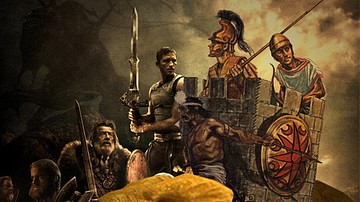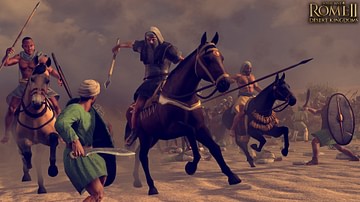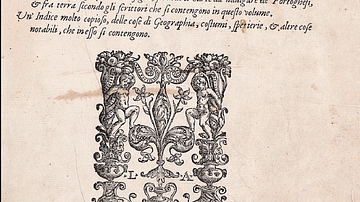Search
Search Results

Definition
Carthaginian Warfare
Carthaginian warfare has been overshadowed by defeat to Rome in the Punic Wars, but for six centuries before that Carthage was remarkably successful in conquering lucrative territories in North Africa, the Iberian Peninsula, and Sicily. By...

Image
The Travels of Leo Africanus, 1507-1520
A map tracing the journeys of Leo Africanus (al-Hasan ibn Muhammad al-Wazzan al-Fasi, c. 1494 – c. 1554), a 16th-century Maghrebi diplomat, traveler, and geographer. His Description of Africa (1550) remains one of the most detailed early...

Article
The Masaesyli and Massylii of Numidia
The North African Berber kingdom of Numidia (202-40 BCE) was originally inhabited by a tribe (or federation of tribes) known as the Masaesyli, to the west, and a coalition of smaller tribes, known as the Massylii, to the east. The meaning...

Definition
The Description of Africa
The Description of Africa is the first comprehensive book about Africa, written by Leo Africanus, an African scholar trained in the Islamic intellectual tradition, in 1526, during the Italian Renaissance. A skillful mixture of anthropology...

Image
Obelisk of Titus Sextius Africanus
This rose granite obelisk was found in Rome. Roman period, circa 50 CE. (State Museum of Egyptian Art, Munich, Germany).

Image
Leo Africanus as Shakespeare's Othello
Many scholars, without concrete evidence, believe that Leo Africanus 1485-1554 was the inspiration behind William Shakespeare’s Othello, shown here with Desdemona in an 1849 painting by Théodore Chassériau, currently in the Louvre Museum...

Image
The History and Description of Africa by Leo Africanus
An early title page from The History and Description of Africa by Leo Africanus (1485-1554), first published in 1526.

Image
Portrait of a Humanist: Leo Africanus
Portrait of a Humanist by Sebastiano del Piombo c. 1520. The identity of the person is unknown. Dietrich Rauchenberger has suggested that the painting may depict Leo Africanus (1485-1554).

Definition
Carthaginian Army
The armies of Carthage permitted the city to forge the most powerful empire in the western Mediterranean from the 6th to 3rd centuries BCE. Although by tradition a seafaring nation with a powerful navy, Carthage, by necessity, had to employ...

Definition
Roman Siege Warfare
In ancient warfare open battles were the preferred mode of meeting the enemy, but sometimes, when defenders took a stand within their well-fortified city or military camp, siege warfare became a necessity, despite its high expense in money...